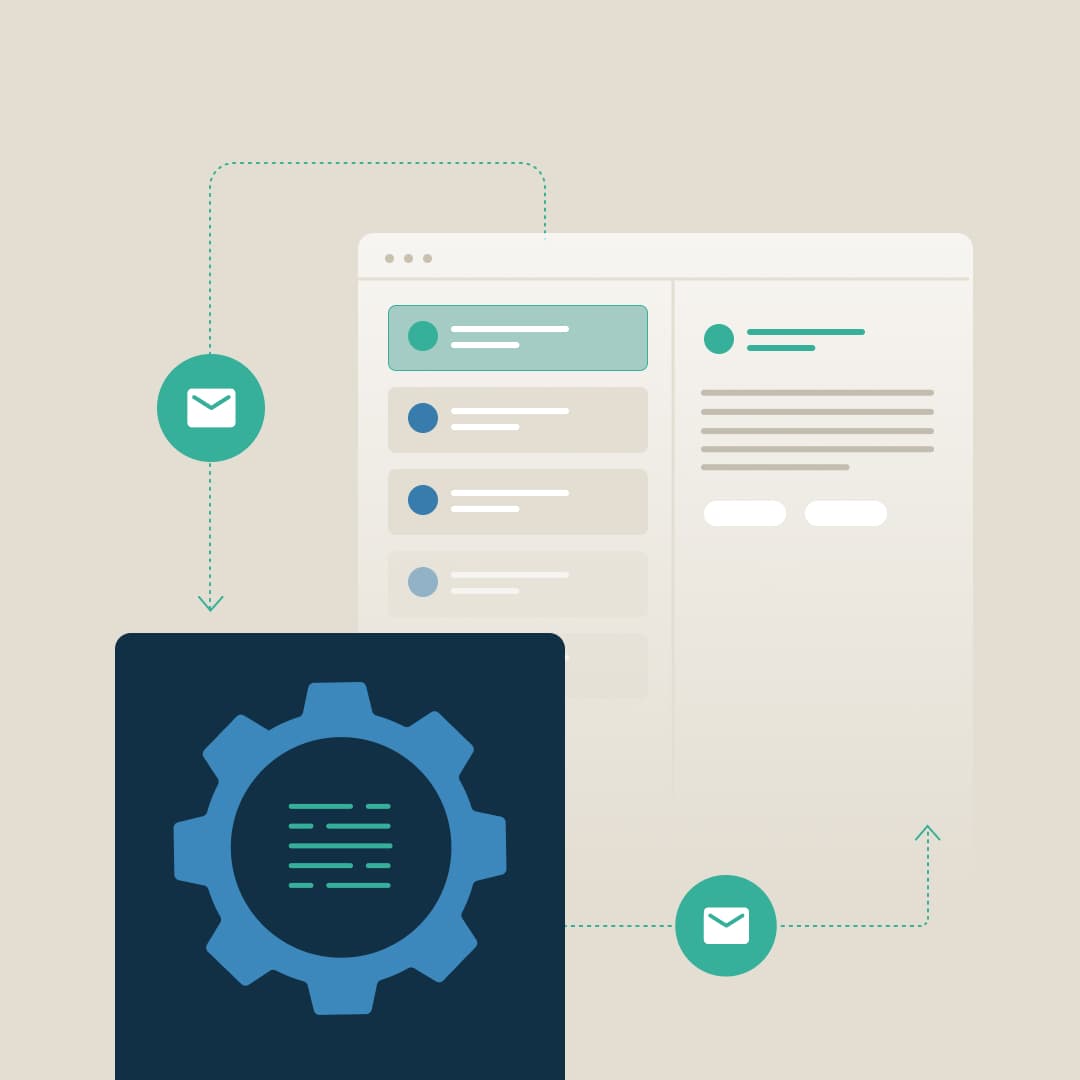Law firms rely heavily on email, often resulting in overflowing, unorganized inboxes. Without a clear law firm email management strategy, lawyers and staff could spend hours dealing with emails rather than their cases. The solution is to implement the 10 email management techniques outlined below.
The ABA’s 2023 Website & Marketing Tech Report found that 92% of respondents used email most often to communicate with clients –- more than the phone (86%) or face-to-face meetings (45%). Handling email well, then, is essential to gathering and relaying information to clients. Yet, too many attorney emails can get lost in unorganized inboxes, leading to miscommunications and unsatisfied clients.
No one wants to think about it, but mishandling your email could impact the outcome of a case, lead to a breach of confidentiality, tarnish your firm’s reputation, and lead to disciplinary action. All of this is avoidable, though, with the right email management strategies and legal technology.
Contents
Common problems with email for lawyers
Many lawyers have a love-hate relationship with email. It’s convenient and essential, yet it can cause serious headaches. Email inboxes for lawyers are often unorganized, which means they sift through dozens of emails every day. Lawyers often pop in and out of their inboxes throughout the day or receive real-time alerts, distracting them from their other tasks and hurting their productivity.
Worse yet, it’s challenging for law firms to maintain the privacy and confidentiality owed to their clients through email. It’s too easy for information to fall into the wrong hands, even with disclaimers.
Top 10 email management tips for lawyers
There’s no need to struggle with email. Your law firm can take clear steps toward organized, effective inboxes to improve collaboration and law firm client communication and reduce stress levels. You might even reach the goal of “Inbox Zero” one day.
1. Implement encryption
This deserves the first spot on the list — you must secure your emails. Unfortunately, not enough law firms adequately protect email communications. According to the ABA’s Tech Report, 66% of respondents relied on a confidentiality statement in the body of their emails to protect confidential information. Only 44% of respondents encrypted email communications, and 26% password-protected documents they sent by email.
Yet, as the ABA’s article, “Why Attorneys Need to Implement Email Encryption” makes clear, these numbers must increase. Security breaches and email scams are on the rise, and encryption is now the norm, not an option. Security is another reason to look into matter management software where you can securely store case information and client communications.
2. Establish daily focus time
There’s no need for real-time email notifications. Turn them off, and instead, schedule a few 15–30 minute periods throughout your day to review email. Block off these times on your calendar and tell your colleagues you’re unavailable. Do your best to avoid multitasking during this time.
For example, you might start your morning with 30 minutes of email. After several hours of court or casework, another 30 minutes before lunch. In a mid-afternoon session, you could finish responding to emails from the day before, and in a final end-of-the-day block, you could respond to emails and tag those you’ll get to the next morning.
3. Organize your inbox
Whether you use Gmail or Outlook, take advantage of folders and labels — you can even color-coordinate them. There are many ways you can choose folders, from high-level categories like “Admin” down to specific client matters. Experiment with what works best for you.
4. Automate your organization
Create rules and filters to automatically sort and categorize emails as they arrive, saving you time and helping you prioritize your responses. For instance, you could sort by the sender’s email address, the subject line, or the content of the email body.
Need help getting started? Try these resources:
If you aren’t email savvy, consider having support staff set up automation for every new client.
5. Prioritize your actions
Decide how you’ll go through your emails after they’re organized. In other words, which specific action will you take first:
- Respond
- Forward
- Snooze
- Archive
- Delete
- Create task
Generally speaking, whichever order you prefer, you’ll want to prioritize time-sensitive correspondence during each block of focus time.
6. Draft templates
Many law firm and attorney emails are repetitive — there’s no need to start writing from scratch each time. Coordinate with your staff to draft email templates and canned responses. This can speed up routine interactions and keep your law firm’s communication with clients consistent across the board.
Some potential uses for templates and canned responses include:
- Responding to prospects
- Providing fee information
- Onboarding new clients
- Providing clients with progress reports on their case
- Event reminders
- Notifying clients of new notes or documents in the case management system
- Invoicing
7. Delegate to staff
If you don’t already, consider sharing your inbox with your paralegal, secretary, or other support staff. Train them to organize emails that are not automatically filtered into a folder and respond to specific types of emails, such as administrative requests, prospective clients, client onboarding communications, or routine scheduling.
8. Unsubscribe regularly
Once per month, unsubscribe from newsletters and ads you aren’t interested in. It’s all too easy to sign up for marketing communications without realizing it or for a few emails to slip through the spam filters. Additionally, archive and delete emails you no longer need.
9. Establish expectations
This is possibly one of the most important steps in email management for law firms: setting expectations. Be clear with colleagues, clients, opposing counsel, insurance companies, and other parties about the best way to reach you, your typical working hours, and your usual response times. You can explain this during client onboarding and even outline this information in your email signature.
10. Adopt email alternatives
Some meetings could be emails, and some emails could be direct messages. Adopt alternatives to email to reduce the stress on your inbox. For your law firm’s lawyers and staff, consider a communications platform like Slack or Teams. For clients, use a secure case management system that centralizes communication and improves collaboration.
Top-tier email management: Integrate email with your case management system
Your inbox doesn’t need to be an entirely disparate system from your personal injury case management software. CloudLex integrates with Gmail and Outlook to streamline your case communications and collaboration. You can upload emails to CloudLex directly, save emails as notes, categorize and tag specific matters, group related emails, search your correspondence, and more.
Reach out to CloudLex today for an email management and integration demo.

